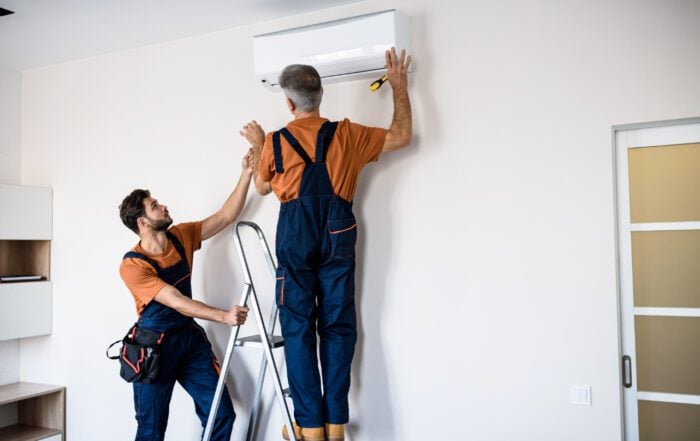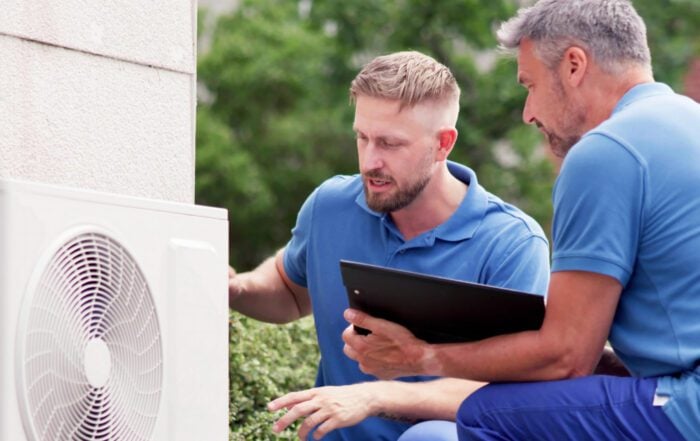To understand how geothermal heating and cooling works, we must first understand what it is. Geothermal heating and cooling use geothermal energy to heat homes and buildings in the winter and cool them in the summer. Geothermal energy is a renewable resource, and a great option for a more sustainable heating and cooling system.
Geothermal Energy
Without geothermal energy, we wouldn’t have geothermal heating or cooling. Geothermal energy is heat generated and kept in the earth. The Earth’s core, about 2,900 kilometers below the surface, is the source of this continual heat. Geothermal breaks down into “geo” which means “earth” in Greek, and “thermal,” which means “heat” in Greek. Geothermal heat is renewable and can be used to heat and cool buildings sustainably, or even to generate electricity.
Geothermal Heat Pumps
Unlike traditional HVAC Systems, geothermal heat pumps are attached to a pipe system that lies below the surface of the ground. Geothermal energy stored in the earth keeps the ground at a consistent temperature, despite changes in the weather. The geothermal heat pump takes advantage of the stored geothermal energy by exchanging the heat from inside the home with the earth.
Heating the Home
In the winter, the constant temperature of the ground is warmer than that of the air temperature. The geothermal heat pump uses the ground heat to replace the cool water in the pipe system with water heated from the ground, heating your home.
Cooling the Home
When cooling the home, the process is simply switched. In the summer, the ground is consistently cooler than the air temperature, so the heat from your home is sent through the pipes and cooled in the ground, lowering the overall temperature of your home.
Types of Geothermal Heating and Cooling Systems
There are multiple types of geothermal heating and cooling systems, each of which have different designs to best suit their locations.
 Closed Loop Systems
Closed Loop Systems
Closed loop systems, such as vertical, horizontal, or slinky loop systems, water mixed with refrigerant is held within the pipes and transfers heat in or out of the building. The water mixture never has to be replaced or supplemented, as long as no damage occurs to the system, so it’s the same water working through the pipes to provide heating and cooling.
Vertical systems have vertical heat exchangers that can go as deep as 400 feet and are a good option for buildings or homes with limited space. Horizontal and slinky loop systems don’t go as deep, but rather use more surface area. The main difference between horizontal loops and slinky loops is the space they use. The piping for both can be as long as 400 feet in certain circumstances, so slinky loops are coiled and overlap with each other to reduce the amount of space needed while still moving the water through a long distance of pipes. Both horizontal and slinky loops can have issues if placed too close to the ground’s surface. If done poorly, the pipes will be heated by the sun more and be at risk of losing heat quickly in the winter.
Pond/Lake Systems
Pond or lake systems use an existing body of water, rather than a closed loop piping system. This process includes minimal digging, and can involve either submerging the pipes into the body of water or placing them on the bed of it.
Open Loop Systems
Open loop geothermal heating and cooling uses ground water, from a well, hot spring, or some other source. Groundwater is directly pumped through the system to heat and cool the house, typically with one point of entry, and a separate exit point for the used water, circulating the water back through the ground.
Considering a Geothermal Heating and Cooling System?
The professionals at Stack Heating, Cooling, & Electric are here for you and your needs. Based out of Cleveland, OH, since 1976, our team can help with all your geothermal heating needs including installation and repairs. Visit our website or call us at (440) 294-5970 to get an estimate for your new geothermal system!
Have Any Questions?
If this is an emergency please call 440-937-9134.
Otherwise, please feel free to call us or submit this form to schedule an appointment for service or request an estimate. We will contact you shortly!





